Last month, I gave you a mother lode of information about the Mulka Project’s Dhalinybuy CD. Documentation for the other titles I recorded wasn’t so far along when I suddenly had to leave Yirrkala, but I’ll provide you what I can to try and fulfill the original educational goal of these CDs. This month, Gurrumuru.
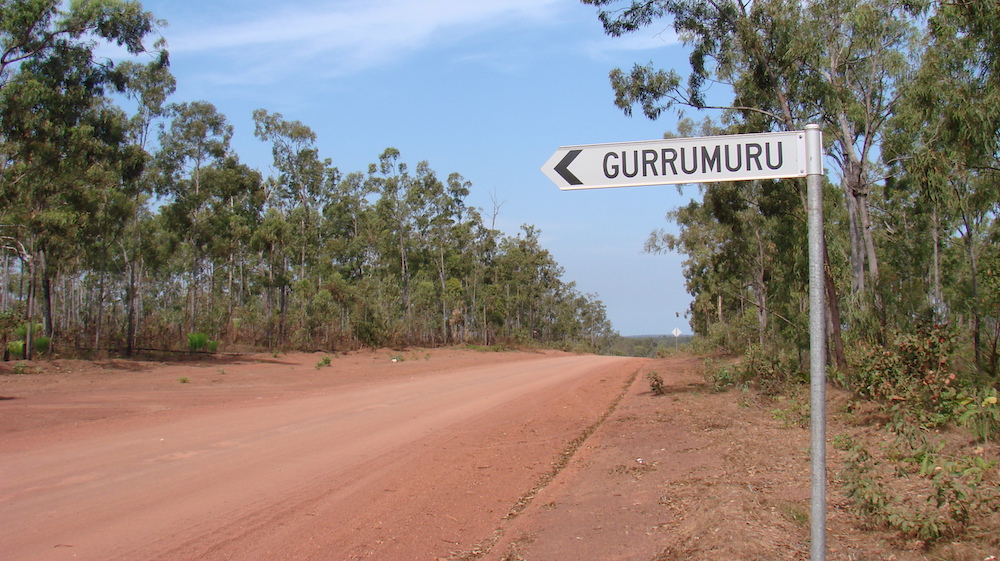
We recorded at the Dhaḻwaŋu clan homeland of Gurrumuru on 28 September 2007. Once again, it was a road trip from Yirrkala with a stash of food, basic recording gear, the original young Mulka staff Ḏiṉḏirrk Munuŋgurr and Ṉuwaniny Burarrwaŋa and this time Buku-Ḻarrŋgay staff member Balwaltja Munuŋgurr, who wanted to see the process and visit family at Gurrumuru. Dhaḻwaŋu clan leaders Yumutjin and Warralka Wunuŋmurra sang while their gäthu, or nephew by non-Yolŋu thinking, Wambuna played yidaki (a yidaki you can hear more of HERE).
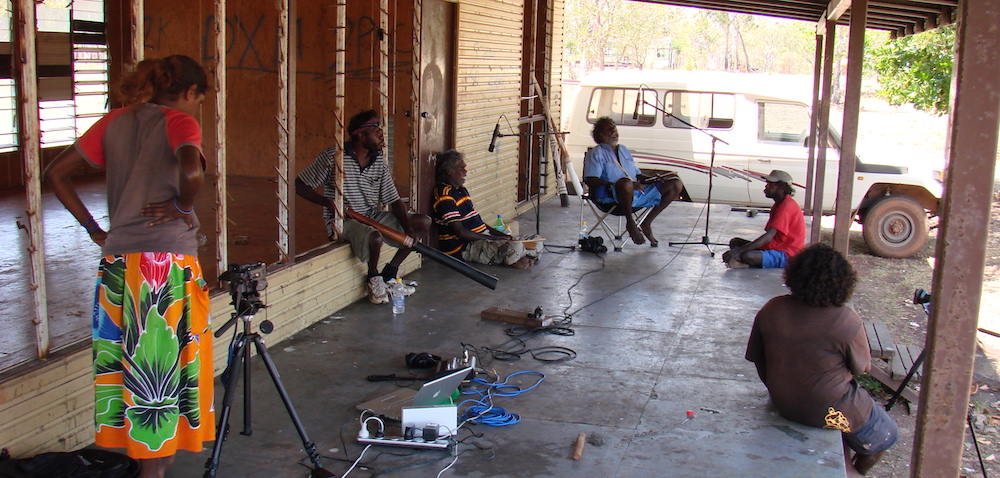
We had one little mishap that day and the external hard drive used for the recording took a tumble. It seemed fine, but died completely shortly after the trip while I was trying to back it up. Fortunately, I already made a rough mix for the artists. That rough mix had to serve as the final mix. At least on this CD, there was no hard work to be done mixing it!
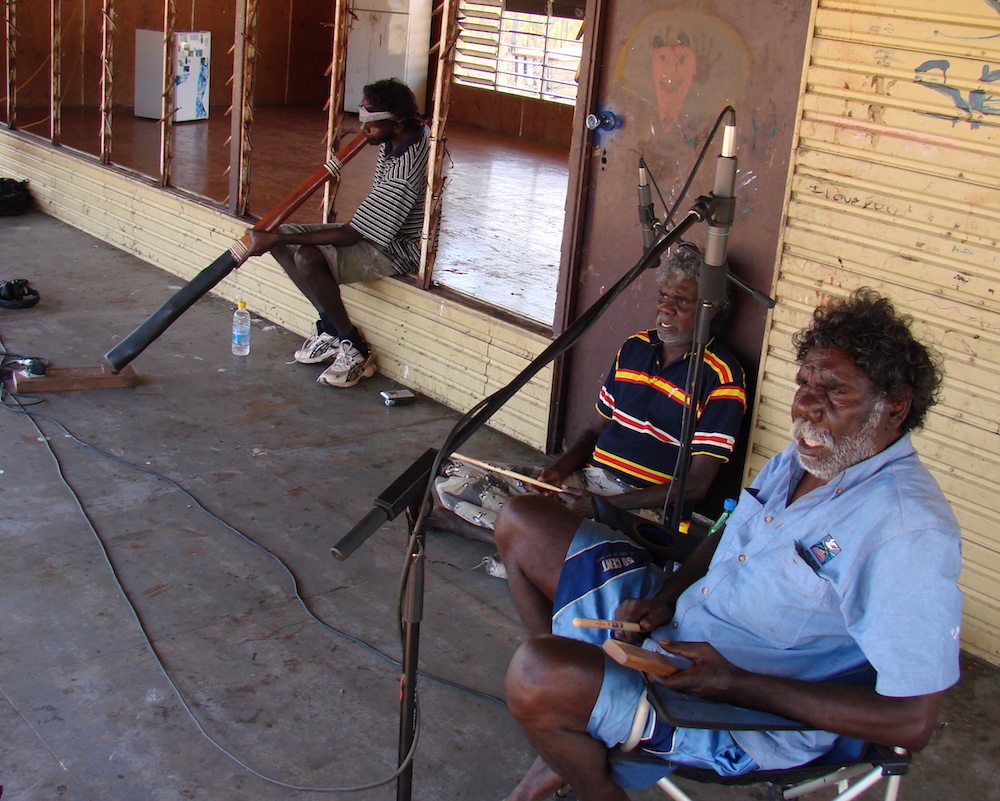
We recorded Yumutjin telling the story of the songs before I left Yirrkala, but we didn’t finish transcribing or translating it. My knowledge of the Dhaḻwaŋu Dhay’yi language and the high level ceremonial words Yumutjin used isn’t sufficient for me to do it on my own now. Instead of pestering some Yolŋu to help for free long distance, I’ll summarize as best I can.
The songs tell of Birrinydji, or Ḻiya-Yiki, the knife warrior. Some say he was a Macassan, one of the sailors from modern day Sulawesi in Indonesia who came to Arnhem Land hundreds of years before Europeans arrived. Some say he was something else. Macassans didn’t normally venture as far inland as Gurrumuru. Maybe he was one of the Bayini, a group shrouded in myth who arrived before the Macassans. Maybe he was something else. Some historians believe Chinese sailors visited the Arnhem Land coast first. In either case, the songs of Gurrumuru and Birrinydji include introduced material culture such as knives, tobacco, playing cards, and rice.
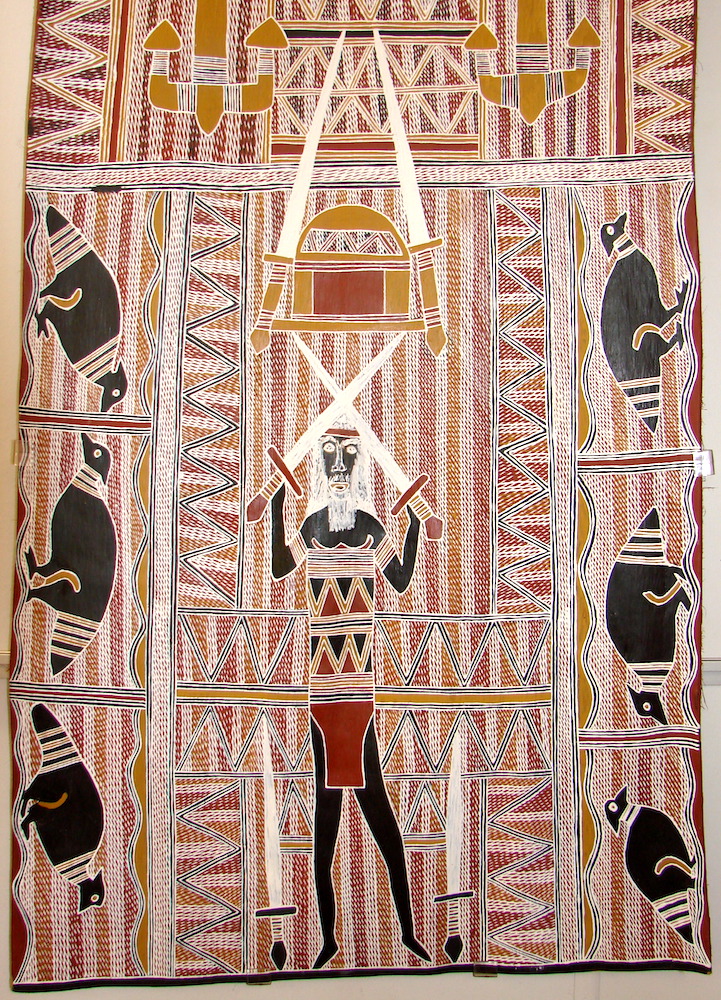
To paraphrase Yumutjin:
This is how we sing the land at Gurrumuru. We sing of the warriors of the knife at Gurrumuru. Of the preparation of the place for the spirit we call Ḻiya-Yiki.
They followed the path, came to this place and prepared the land, clearing the brush. Making the place clean. This is the place they and we belong.
He spotted a special tree and went to sit in its shade to look over the clearing. He fell asleep and dreamed of the place. When he awoke, he smoked tobacco from his long pipe. It is a special smoke given to the people of Gurrumuru. Then he got up and began playing and singing. (YidakiStory side note: he plays the djoling, often translated either as ‘mouth harp’ or ‘flute’. I suspect it is not a coincidence that Indonesians have a bamboo flute called suling, and that Yolŋu don’t have an ‘s’ in their language).
From there, he went to find money and started playing cards with the other men. There is tension among them. He goes and gets alcohol and drinks. As he gets drunk, he gets more wild. He gets his knife and begins an aggressive dance. The red calico flags of Gurrumuru are raised.
Meanwhile, rice is being cooked. Some is stirred in the pot and some is tossed into the clearing. All the leftovers are thrown out to the clearing. The jungle fowl Djiḻawurr emerges, stamps its feet in the rice and calls out. It announces to other birds and by extension the humans that the north wind is coming, clearing the air and the land.
As Djiḻawurr cries out, the sun sets, casting spectacular colours of red and yellow in the clouds.
I’ve posted this several times before but here again is a video clip from near the end of the recording session.
Much of Yumutjin’s telling included lists of ‘power names’ for places, people and objects. I don’t feel comfortable including them here without his oversight even though he recorded the statement for the public. I might get something wrong and the specific words don’t contribute much to the story for us outsiders, anyway.
I don’t want to overstep any other bounds, but I’ll say that Djiḻawurr’s calls are often said to be announcements of death and the raising of flags is part of mortuary ceremony. It’s probably safe to assume that Birrinydji’s drunken aggression with his knife was his undoing, and that this story establishes Dhaḻwaŋu funeral practices. That’s all I’ll say about that.
A couple of years later, the Mulka Project worked with Yumutjin and others at Gurrumuru to create a short film of the dance for a small part of this song cycle. You can get a little more context and see the quick version of the story as told here:
I hope this helps you appreciate that CD or download you’ve got a little bit more and gives you another small window of insight into Yolŋu culture.
See also my post about the origins of the CD series HERE.

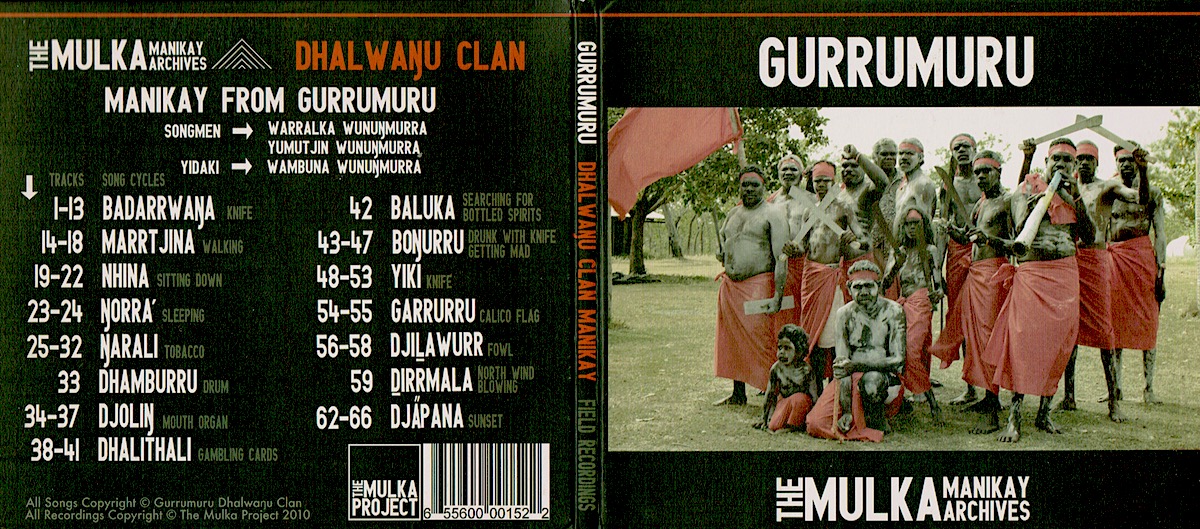
Hello Randin – This information is so much of what I have been looking for. You and the Yolgnu people (which is you too by adoption) deserve so much… and my thanks for all of this.
When were metal tools introduced?
We will never know exactly. As I said in there, Indonesians came for at least a few hundred years before Europeans did and brought knives, axes and such. Yolŋu would work for them harvesting sea cucumbers in exchange for tools, alcohol, rice, etc. Yolŋu also tell stories of the Bayini, another more pale-skinned people, arriving even before the Indonesians, but no one knows for sure who they were.
Also, if you look up the book ‘The Universe of the Warramiri,’ you’ll find that some Yolŋu claim that their ancestors had great technology in the ancient past, but chose to abandon it in favor of living on the land!